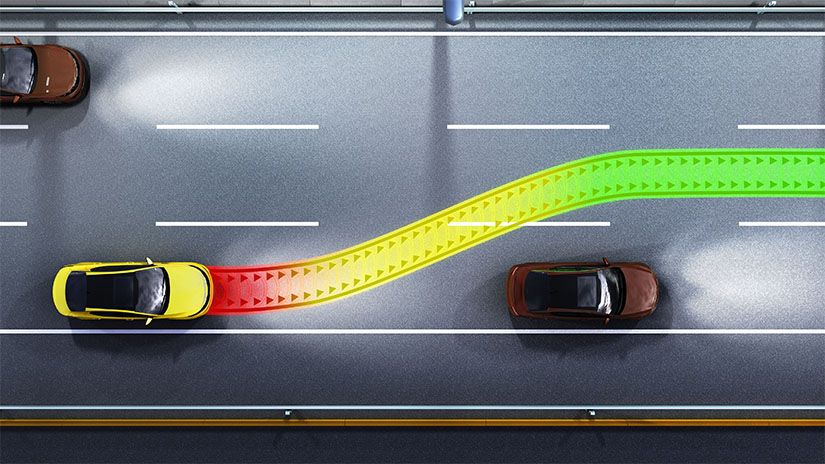Mass adoption of fully autonomous vehicles (AVs) may be years away, but smart transportation is already here in locales ranging from large, urban cities to smaller, progressive towns. These communities are harnessing technology and business innovations to make transportation safer, more sustainable and more enjoyable. They’re adopting connected cars with advanced driver assistance systems (ADAS); electric vehicles including bicycles, scooters, buses and cars; and mobility-as-a-service (MaaS) business models such as ride and car sharing and e-hailing to help residents navigate for both work and play.
That’s good news, because conventional transportation, with its focus on gas-guzzling vehicles, contributes to social and environmental ills. In the United States, these issues include:
Although COVID-19 has granted a temporary reprieve as millions of American workers telecommute, eventually many workers will return to the office, filling the highways and streets with traffic and bringing these issues back to the fore. Some communities are ahead of the curve and implementing transportation systems to address these problems and improve the lives of commuters within their jurisdictions.
To develop these ambitious multimodal transportation systems, transportation organizations and other mobility providers are working with Hitachi to take advantage of its advanced movement analytics capabilities. These capabilities provide real-time information across the mobility spectrum, integrating drones, connected buses, connected cars, autonomous driverless shuttles, passenger movements, bicycles and other data sources.
By co-creating their systems with Hitachi, these providers can help riders move through their multimodal journey, while providing tracking capabilities and command directions to connected mobility devices. For example, a rider might choose to bicycle to the town center, consult a trip-planning kiosk and then catch an AV to another destination. Although the rider is unaware of the infrastructure supporting this journey, Hitachi’s advanced movement analytics is behind it. By pushing intelligence to the edge, Hitachi provides partners and other mobility providers with contextual data that vehicles can use to make their own decisions in concert with other smart assets.

For example, in Lake Nona, Florida, smart transportation is accelerating, thanks to a partnership between this 17-square-mile, privately owned community and several innovative organizations. The town has enlisted Hitachi, Beep and Local Motors to join its developer, Tavistock Development Company, to achieve a vision of integrated mobility that will be a powerful brand attractor for this “community of and for the future.”6 The project will include a full-service mobility hub, which connects multiple modes of transportation to the Lake Nona Town Center; a multiacre park with dedicated routes for pedestrians, bicycles, scooters and AVs; a bridge connecting the park with the hub; more than 25 miles of dedicated AV lanes; and bicycle trails.7
And in East Baton Rouge Parish in Louisiana, Hitachi has partnered with Capital Area Transit System (CATS) to enhance the experience of its transit system riders. By working closely together, Hitachi and CATS will digitalize the flow of information to passengers to make it easy for riders to buy tickets, and to know where their bus is and when it will arrive. Based on Lumada, Hitachi’s IoT platform, the service will provide a multichannel messaging and mobile wallet experience to bring an improved passenger experience to underserved. The multiyear agreement will enable CATS and Hitachi to gather data insights about the holistic passenger journey that can drive operational improvements and enhanced service offerings for CATS passengers.
A move into smart transportation is good business. Consumers want a better transportation experience that frees them from the grind of commuting and the high costs of owning and operating conventional vehicles. With MaaS models, consumers get a better commuting or riding experience that will be continually enhanced with new innovations. For example, vehicle-to-everything (V2X) communications enables cars to communicate with other vehicles and infrastructure around them, such as stoplights and tollbooths, via short-range wireless connections. Is that car veering into your lane? V2X will enable your vehicle to make an instant course correction to avoid a collision. For urban and underserved consumers, MaaS models will simplify payment for public transit services and enable them to move seamlessly across city landscapes, such as from bus to subway and back again.
Meanwhile, the global rollout of 5G will enable developers to focus on evolving autonomous car capabilities, including the in-car experience, offering features such as infotainment and pervasive wireless connectivity. Instead of driving to work, losing time as you navigate stop-and-go traffic, imagine being able to hail an autonomous vehicle that navigates the best course to your destination, while you safely hold a video meeting or work on a presentation. As vehicle electrification continues to evolve, with smaller and more powerful batteries and a network of charging stations, the country will move ever closer to achieving the dream of zero-emissions transportation, providing cleaner air for all to breathe.

Providing custom solutions for communities aligns with Hitachi’s vision to power good. Hitachi is working closely with private enterprise and government customers to harness innovative technology to accomplish such goals as transforming transportation and designing smart cities. The new business builds on Hitachi’s Lumada data management and automation platform to help achieve a zero-carbon society with various measures including the use of renewable energies. In addition, Hitachi offers powerful data analytics capabilities that smart city and MaaS providers and others will be able to tap to develop new public infrastructure solutions and offer compelling new consumer services.
Will smart transportation help galvanize the development of smart cities, where interconnected services, personalization, and consumer-friendly interfaces make it safer and easier to work, live, move and play? We’re counting on it.
Learn more about how Hitachi is powering good for transportation customers.